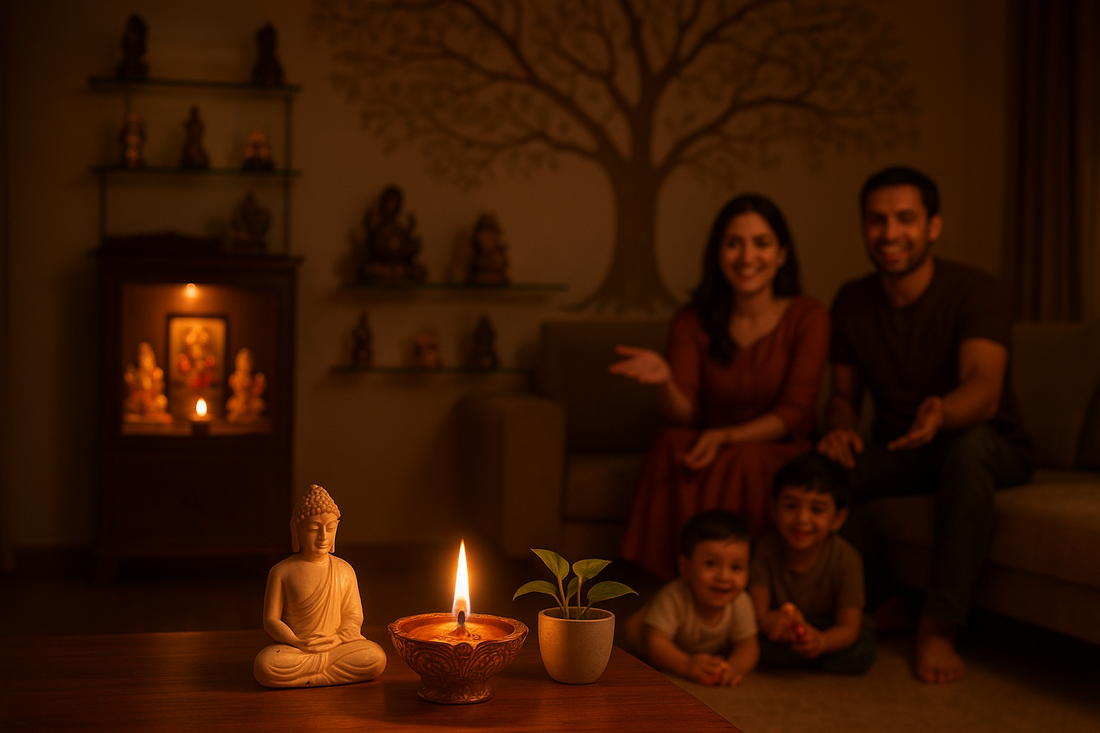
Illuminating Traditions: What Are Diyas and Their Significance in Festivals
Historical Background of Diyas
Diyas, also called deepaks or clay oil lamps, have been used in India for over 5,000 years. Originating during the Vedic era, these lamps were made from natural clay and symbolized purity, energy, and the divine. Ancient texts describe diyas as tools to dispel darkness and invite blessings into homes and temples. In traditional Indian households, lighting a diya was part of everyday life — during prayers, festivals, and even sunrise and sunset. Kings and sages lit diyas during yajnas (sacred rituals) to purify the environment and invoke positive energies. The use of diyas wasn’t just religious, but also cultural — bringing communities together around shared rituals. Their soft glow is symbolic of hope, enlightenment, and spiritual awakening.
The Cultural Significance of Diyas in Indian Festivals
Diyas hold a sacred space in Indian culture — they are lit not just for light, but for spiritual intention. A diya is often the first thing lit in a pooja, signifying the presence of the divine and inviting peace into the space. Lighting a diya is believed to remove negativity and bring clarity to the mind and heart. Whether during marriages, housewarmings, or temple rituals, diyas are used to mark auspicious beginnings. The flame of a diya represents knowledge, which is said to burn away ignorance. In villages and cities alike, diyas are lit daily in home temples and courtyards. They connect generations through a shared tradition that transcends region and language. In essence, diyas are a symbol of devotion, light, and cultural unity.
Diyas in Diwali: The Festival of Lights
Diwali, or Deepavali, literally means "row of lamps", and lighting diyas is at the heart of this grand celebration. According to legend, the people of Ayodhya welcomed Lord Rama by lighting thousands of lamps after his return from exile. That symbolic gesture continues today, as millions of homes across India and abroad are lit with oil diyas. These lamps are placed at doorsteps, balconies, and altars to banish darkness and attract divine blessings. Diwali also marks the worship of Goddess Lakshmi, and diyas are said to guide her into one’s home. Families decorate diyas with colors, mirrors, and glitter, making them both sacred and beautiful. The entire environment glows with warmth, creating a sense of joy, togetherness, and spiritual elevation.
Explore Handmade Diwali Diyas on Upharkaro
Other Festivals Celebrating Diyas: A Comprehensive Overview
While Diwali is the most popular festival for lighting diyas, many other festivals also celebrate this luminous tradition. In Karthika Deepam, celebrated in South India, thousands of lamps are lit in temples and homes in honor of Lord Shiva. During Dev Deepawali in Varanasi, the ghats of the Ganges glow with a sea of flickering diyas, creating a surreal spiritual atmosphere. On Dhanteras, people light lamps to welcome wealth and prosperity through the blessings of Goddess Lakshmi. Bhai Dooj, Govardhan Puja, and even Navratri also involve lighting diyas to mark sacred rituals and familial bonds. In rural India, diyas are also lit during harvest festivals to thank the Earth and nature. Each festival may differ in practice, but the message remains — light conquers darkness.
The Symbolism of Light and Darkness in Diya Usage
The diya is not just a lamp — it is a spiritual metaphor. In Indian philosophy, light symbolizes knowledge, truth, and the divine, while darkness represents ignorance and suffering. Lighting a diya during any ritual signifies removing internal darkness and moving toward self-awareness. The oil in the diya represents negative tendencies, and the cotton wick is symbolic of the soul — when lit, it shows the soul rising above all worldly attachments. Lighting a diya is an act of meditation — a pause to reflect, connect, and center oneself. Whether it's a single diya in a quiet temple or thousands in a grand festival, the meaning is the same: even one small light can drive away the deepest darkness. It’s a daily reminder that positivity and faith always shine through.
Types of Diyas and Their Unique Features
Over time, diyas have evolved from simple clay lamps to beautifully crafted decorative pieces. Traditional clay diyas remain the most popular during festivals like Diwali due to their rustic charm and spiritual significance. Terracotta diyas are sturdier and often come in larger sizes for temples or courtyards. Metal diyas, made of brass or bronze, are commonly used in South India and are prized for their durability and elegance. Floating diyas, which can be placed in bowls of water, are often used in decorative arrangements during poojas and weddings. Designer and painted diyas, adorned with glitter, stones, and vibrant colors, bring a modern twist to traditional rituals. Each type holds its own significance and can be chosen based on the occasion and setting. Whether simple or elaborate, all diyas serve the common purpose of spreading light and positivity.
How to Make Your Own Diyas: A Step-by-Step Guide
Making diyas at home is a fun, spiritual, and family-friendly activity that reconnects you with tradition. Start by choosing natural or air-dry clay and kneading it until it's soft and workable. Roll the clay into small balls and gently pinch them into a bowl shape, making a slight lip for the wick. Smooth the surface using a little water and let the diyas dry in the sun for 1–2 days, or overnight if using quick-dry clay. Once dry, you can paint them with natural colors or acrylic paints using traditional patterns or rangoli-inspired designs. Fill each diya with oil or ghee, insert a cotton wick, and they’re ready to use. These handmade diyas add a personal, eco-conscious touch to your celebrations and are a great craft for schools, homes, and community groups.
Eco-Friendly Alternatives to Traditional Diyas
With growing awareness of sustainability, many people now prefer eco-friendly diyas that minimize environmental impact. Cow dung diyas are 100% biodegradable and considered sacred in many Hindu rituals. Soy wax or beeswax diyas are cleaner-burning alternatives to petroleum-based candles and are often scented naturally. Recycled diya holders made from coconut shells, bamboo, or terracotta reduce waste while preserving cultural beauty. Using plant-based colors for decoration instead of chemical paints makes your diyas safer for kids and pets. Solar-powered LED diyas are another modern alternative for those who want the glow without fire. These choices not only honor tradition but also show care for the environment — making your festival both beautiful and responsible.
Browse Eco-Friendly Diyas on Upharkaro
Conclusion: The Enduring Legacy of Diyas in Modern Celebrations
In today’s fast-paced, tech-driven world, the humble diya continues to shine as a timeless symbol of faith, culture, and connection. Whether used in daily rituals or grand festivals like Diwali, diyas carry centuries of tradition and meaning in their gentle glow. They remind us of our roots, inspire mindfulness, and bring families together around shared values. With evolving materials and designs, diyas now bridge the gap between ancient practices and modern aesthetics. Whether handmade or store-bought, simple or designer, eco-friendly or electric—every diya tells a story. And in that story lives the enduring spirit of light conquering darkness, of hope shining through challenges, and of tradition lighting our way forward.
